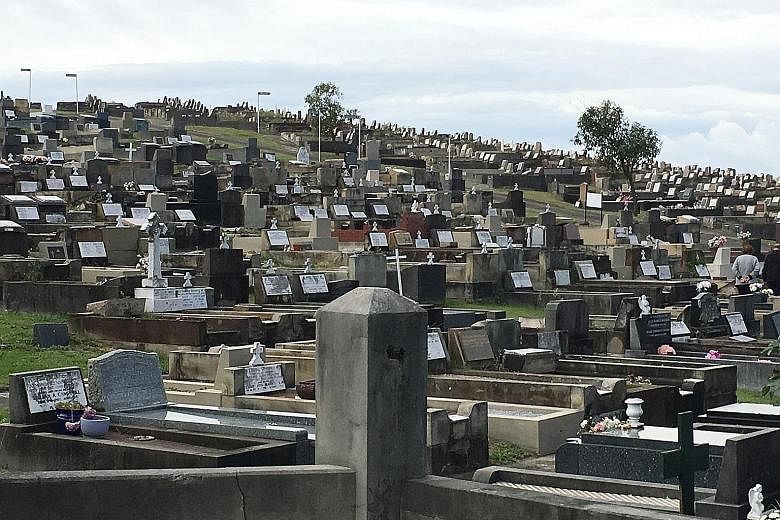A looming shortage of burial space in Australia's largest city is forcing cemeteries to come up with some creative ways of dealing with the dead.
Approaches ranging from catacombs to developing ways to speed up decomposition are being considered across Sydney, a city of five million people which is fast running out of burial space, particularly as its population grows.
Faced with dwindling land in this crowded city, along with an ageing population, it is estimated that Sydney's major cemeteries will run out of space within 30 years.
In Matraville, in the eastern suburbs, the space shortage has sparked one cemetery to consider developing the nation's first catacombs - underground caverns similar to those in ancient Rome. These would provide 7,000 burial spaces in a multi-storey, obviously more than six feet under, "carpark-style" structure.
Southern Metropolitan Cemeteries Trust CEO Graham Boyd said the cemetery - which began operating in 1893 - figures it will run out of space within 15 years. He said the catacombs will need council approval and could be built within five years at a cost of up to A$10 million (S$10.5 million).
"We are running out of usable burial space and we need to come up with solutions," he told The Sunday Times. "All the major cemeteries in Sydney have about three decades of longevity left."
Matraville's plan is to create about 3,500 standard grave sites on multiple levels, each of which could provide for two interments.
The space between the graves would be filled with rows of ossuary boxes. Families would be able - if they choose - to transfer remains from the graves to the boxes, allowing the sites to be used for centuries until the boxes are full.
"You can create perpetuity for centuries for the same grave," Mr Boyd said. "What is driving this is space and the volume of deaths."
Australia's cemeteries are set to fill up faster as the number of people dying each year rises. The number of deaths a year is set to double from about 150,000 now to 300,000 by 2051. The death rate - or number of deaths per 1,000 people each year - was 6.7 in 2015 but is expected to rise to 7.8 by 2030, according to modelling by the Pardee Centre for International Futures at the University of Denver.
About 20km from Matraville, the southern hemisphere's largest cemetery is grappling with similar problems. More than a million people are buried at the 150-year- old Rookwood Cemetery, which will run out of space in about 30 years.
It is planning to conduct a world- first test on up to 120 pig corpses to see if it can find a way to speed up decomposition, and free up more space in single burial sites.
Mr George Simpson, CEO of Rookwood General Cemeteries Reserve Trust, said the pig tests, along with the use of additives to assist decomposition, might seem controversial. But he pointed out that there was also initial opposition to cremation in the 1950s and 1960s, although the furore soon ended.
"This is a real watershed if we can get it right. It would revolutionise the entire industry the world over," he told The Sun Herald last week.
The pig tests have reportedly had input from leaders of the Muslim and Jewish communities, who may have religious concerns about pigs being buried at a cemetery.
Numerous cemeteries have also been urging people to consider burials in mausoleums, above-ground chambers that use less space. Rookwood's mausoleum space is only half-full, reflecting a general preference for burial and cremation.
Most Australians are cremated but about 30 per cent are buried.
In 2013, the New South Wales government introduced controversial laws to allow graves to be "recycled".
Grave sites can be offered with renewable leases, ranging from 25 to 99 years. If families do not renew the lease, the site could be reused and the remains could be exhumed and either reburied or placed in an ossuary box.
For the dead of Sydney, a final resting place is proving to be increasingly temporary.

